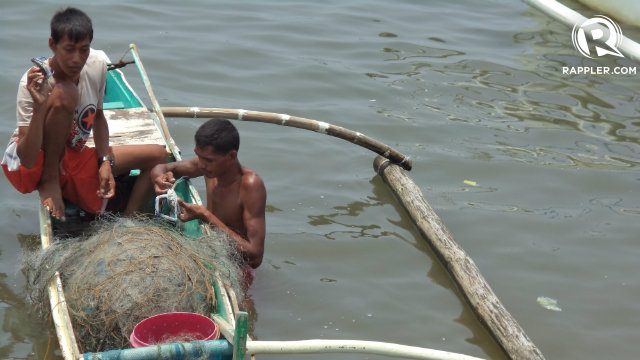SUMMARY
This is AI generated summarization, which may have errors. For context, always refer to the full article.

MANILA, Philippine – Remember galunggong?
Galunggong (round scad) or colloquially referred to as GG was a poverty indicator during the time of President Corazon Aquino – earning the term “poor man’s fish” as it was always included in the average Filipino diet.
However in recent years, GG has been dethroned as the poor man’s fish due to its increasing price.
According to the Philippine Statistical Authority (PSA) in 2013, tilapia (St Peter’s Fish) is now considered the fish of the underprivileged.
The latest market prices prove this to be true. According to the Department of Trade and Industry’s price monitoring system Bantay Presyo, tilapia has become cheaper than galunggong in recent years.
| PRODUCT | 2010 | 2011 | 2012 | 2013 | 2014 |
| Tilapia | P87.6 | P90.8 | P96 | P90 | P100 |
| Galunggong | P87.5 | P100.5 | P107.5 | P130 | P140 |
A kilo of GG in 2012 was priced at P107 ($2.3)*. It increased to P140 ($3.13) in 2014.
Meanwhile, a kilo of tilapia had a price tag of P96 ($2.15) in 2012. Its 2014 price increased to P100 ($2.24).
The first quarter of 2015 saw no change in the price of tilapia. However, the price of the poor man’s fish increased to P140 ($3.13).
Low supply due to overfishing
Many factors have pushed galunggong farther away from an average Filipino household’s reach. One of these is the low output throughout the years.
Data from the Bureau of Agricultural Statistics show that there has been a decline in the production of the galunggong between 2011 and 2012.
From 172,000 metric tons of GG in 2011, the output dropped to 166,000 metric tons in 2012.
According to many studies, overfishing is seen to be one of the causes behind the obvious decline.
The National Stock Assessment Program (NSAP) by the Department of Agriculture-Bureau of Fisheries and Aquatic Resources (DA-BFAR) shows that most fishing grounds in the country have been heavily exploited and have reached their sustainable limits.
Natural disasters are also considered a burden to fishermen. (READ: Farmers, fishermen still struggling 9 months after Yolanda)
The PSA said that the production of GG changed after Typhoon Yolanda (Haiyan) battered the country in November 2013. The disaster caused tremendous damage as outputs declined by almost 4%.

From 270,000 metric tons in 2013, the total galunggong caught during the last quarter of 2014 was down to 261,000 metric tons. This is understandable as the surrounding waters of the affected region produce up to 5,000 metric tons of galunggong.
With struggling supply of fish, it is no wonder that fishermen belong to the poorest sector in the country. The poverty incidence among fisherfolk is at 39.6% as of 2012.
Nutrients from fish
Fish meat is an important part of anyone’s diet. According to the Food and Nutrition Research Institute (FNRI), they are a good source of nutrients.
The bounty from the sea can help fight diseases such as goiter since fish have iodine. Meanwhile, consuming fish can also help build energy because of protein and easy fat. Calcium can also help the processes of the body and contributes to strong bones.
Yet a lot of Filipinos still cannot afford to include fish in their daily meals, notwithstanding the so-called poor man’s fish.
A worker in Manila earning a minimum wage cannot even afford to bring home enough food products prescribed by FNRI in its Pinggang Pinoy. (READ: Is the minimum wage enough for day’s worth of nutritious meals?)
In fact, fish is not even part of the top 20 commonly consumed food products by households. (READ: What are the top 20 food products consumed by Filipinos?)
If the price of fish – together with other food products such as fruits and vegetables – continues to rise in the future, one can only imagine what type of food an average Filipino will eat each day. – Rappler.com
*$1 = P44
Add a comment
How does this make you feel?
There are no comments yet. Add your comment to start the conversation.